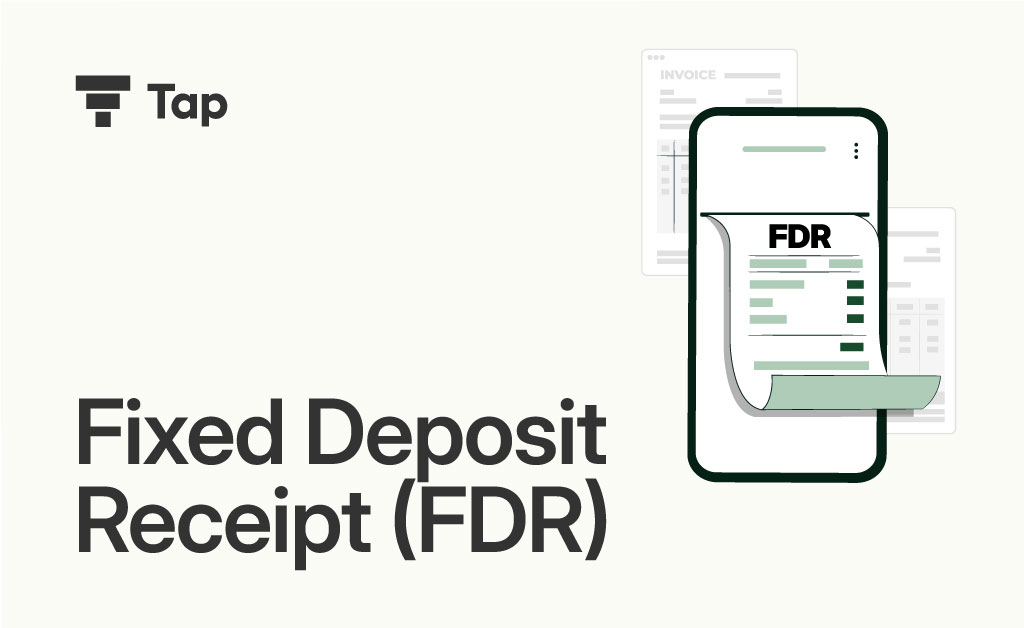Explore What is FDR, It’s Full Form, Meaning, and Benefits

Introduction:
In banking, acronyms are very common, and FDR is an important one to know. The FDR full form is Fixed Deposit Receipt. This receipt is a key document for anyone who invests in fixed deposits. It proves that you’ve made the investment and details the deposit’s terms, like the amount, interest rate, and duration. This blog will explain what an FDR is, why it’s important, and how it works in the banking system.
What is an FDR?
The Fixed Deposit Receipt (FDR) is a certificate issued by a bank or financial institution to an investor who has placed a certain sum of money into a fixed deposit. This receipt is more than just a piece of paper; it is an important document that details the specifics of the fixed deposit, including:
- The principal amount deposited.
- The interest rate applicable.
- The maturity date of the deposit.
- The terms and conditions of the deposit.
- The frequency of interest payments (monthly, quarterly, annually, or at maturity).
FDR Full Form in Banking:
In banking, the FDR full form is Fixed Deposit Receipt. This term is widely used across various banks and financial institutions to denote a document provided to depositors when they make a fixed deposit. The FDR serves multiple purposes, including acting as proof of the transaction and outlining the deposit’s terms.
How Does an FDR Work?
When you open a fixed deposit account, you deposit a lump sum of money into the bank for a specified tenure at a predetermined interest rate. The bank issues an FDR, which serves as a contract between you and the bank. Here’s a step-by-step look at how FDRs work:
- Deposit Process: The investor deposits a fixed sum into the bank for a chosen tenure.
- Issuance of FDR: The bank issues an FDR that documents the principal amount, interest rate, and tenure.
- Interest Accumulation: The deposit earns interest over the tenure, which can be paid out periodically or compounded until maturity.
- Maturity: Upon reaching the maturity date, the bank returns the principal amount along with the accrued interest to the investor.
Benefits of FDR in Banking
- Safety: Fixed deposits are considered one of the safest investment options as they are not subject to market fluctuations.
- Guaranteed Returns: The interest rate on fixed deposits is fixed and guaranteed, providing predictable returns.
- Flexible Tenure: Fixed deposits offer flexibility in terms of tenure, ranging from a few months to several years.
- Tax Benefits: Certain fixed deposits, such as tax-saving FDs, offer tax benefits under Section 80C of the Income Tax Act.
How to Use an FDR for Loans?
One of the significant advantages of having an FDR is that it can be used as collateral for loans. Banks often allow customers to take a loan against their fixed deposit. This facility provides quick liquidity without breaking the deposit. Here’s how it typically works:
- Loan Application: The depositor applies for a loan against their FDR.
- Loan Approval: The bank assesses the FDR and provides a loan amount, usually a percentage of the deposit.
- Repayment: The loan can be repaid over the agreed term while the FDR continues to earn interest.
Checking FDR Details and Balance
Keeping track of your FDR is essential. Here are some ways to check your FDR balance and details:
- Bank’s Online Portal: Most banks offer online services where you can log in and view your FDR details.
- Bank Statements: Regular bank statements will also show details of your fixed deposits.
- Customer Service: You can always visit a bank branch or call customer service for information on your FDR.
Important Considerations for FDRs
Before investing in an FDR, consider the following:
- Premature Withdrawal: Understand the penalties for withdrawing your deposit before maturity.
- Interest Rates: Compare the interest rates offered by different banks to get the best return.
- Taxation: Be aware of how the interest earned on FDRs is taxed.
- Renewal Options: Some banks offer automatic renewal of FDRs at maturity; check the terms before opting in.
Conclusion:
Understanding the FDR full form and its implications in banking is crucial for anyone considering a fixed deposit. FDRs offer a safe and reliable way to earn interest on savings, with the added benefit of being useful for loans. Whether you’re planning to invest in a new fixed deposit or manage an existing one, knowing the ins and outs of FDRs will help you make informed financial decisions.
Looking for better returns on your savings? Visit TapInvest and explore fixed-income investment options with competitive interest rates. Start your journey towards secure and high-yield investments today!
FAQs on Fixed Deposit Receipts:
What is the interest rate for FDR in 2023-24?
The interest rates on FDRs vary depending on the bank and tenure. Typically, rates range from 5% to 8% per annum. It’s advisable to check with specific banks for the most current rates.
How can I withdraw my FDR online?
To withdraw your FDR online, log into your bank’s online portal and navigate to the fixed deposit section. Follow the instructions for premature withdrawal or wait until maturity to redeem your FDR.
What are the steps to check my FDR balance?
You can check your FDR balance through:
- Online Banking: Log into your account and view your FDR details.
- Bank Branch: Visit your branch and request a balance inquiry.
- Phone Banking: Call customer service for information on your FDR.
How is the FDR used in banking?
FDRs are used as proof of investment in a fixed deposit. They can also be used as collateral for loans, providing liquidity without breaking the deposit.
What does FDR mean in banking terms?
In banking, FDR stands for Fixed Deposit Receipt. It is a document provided by the bank to the depositor, detailing the terms of the fixed deposit.
